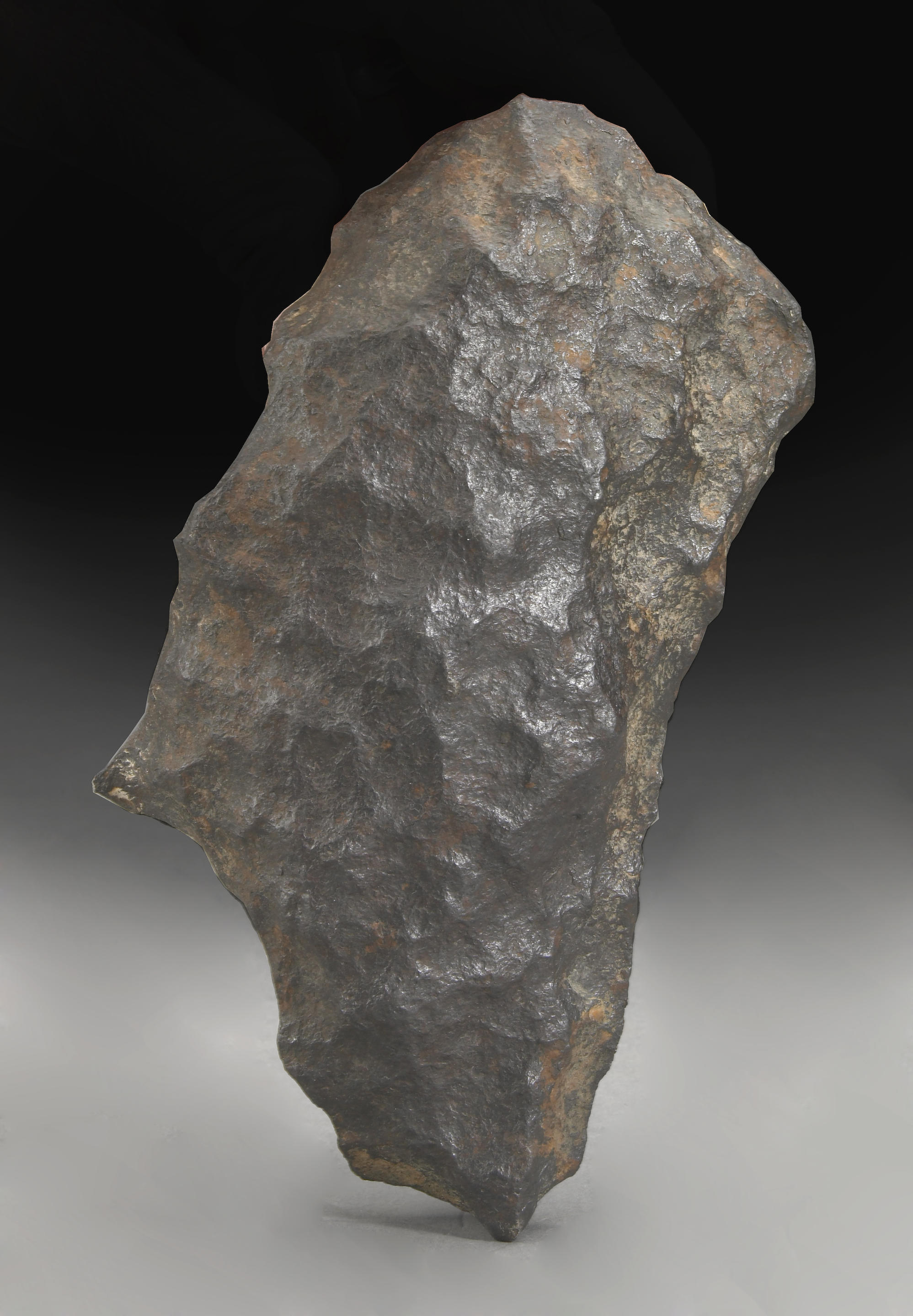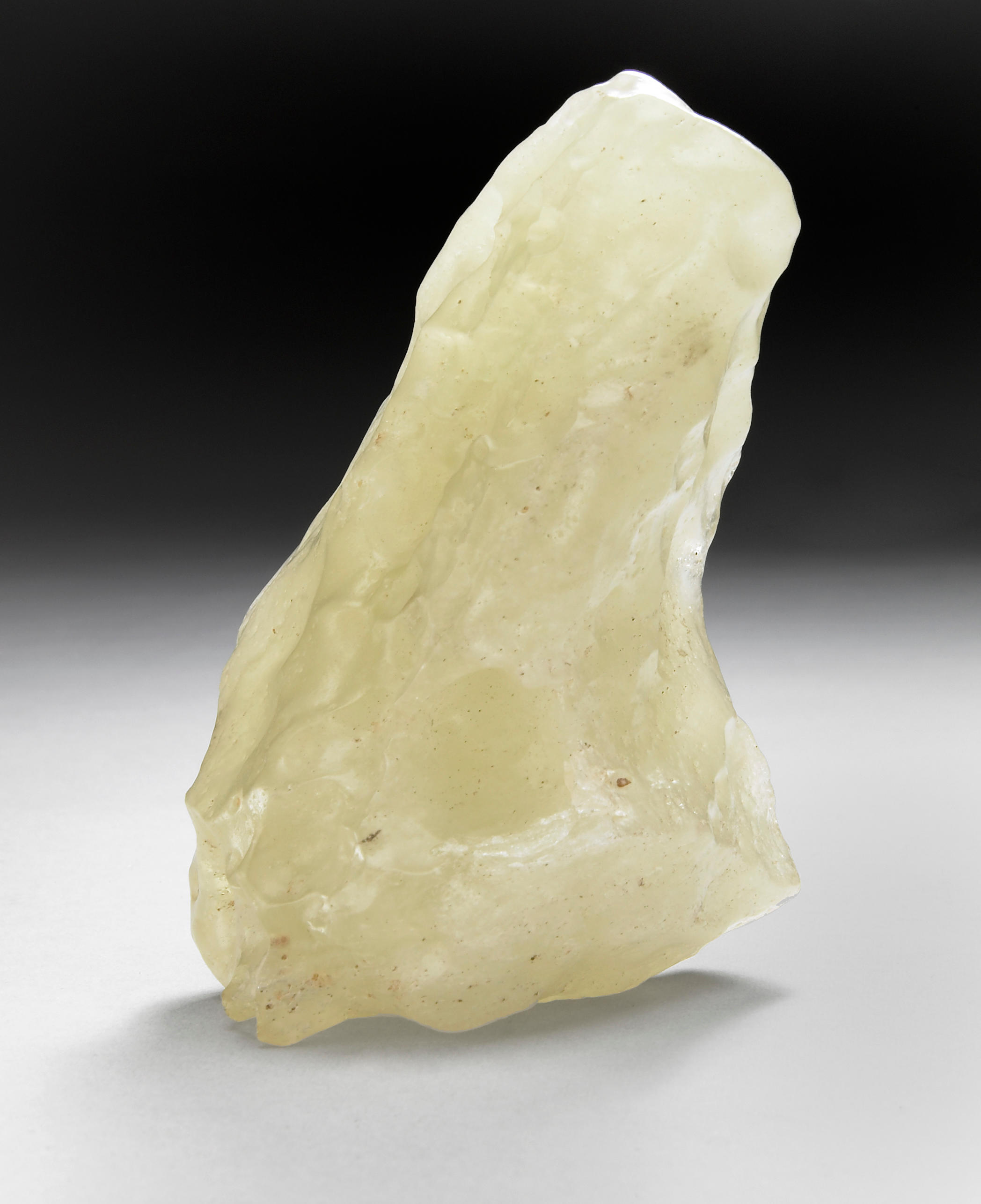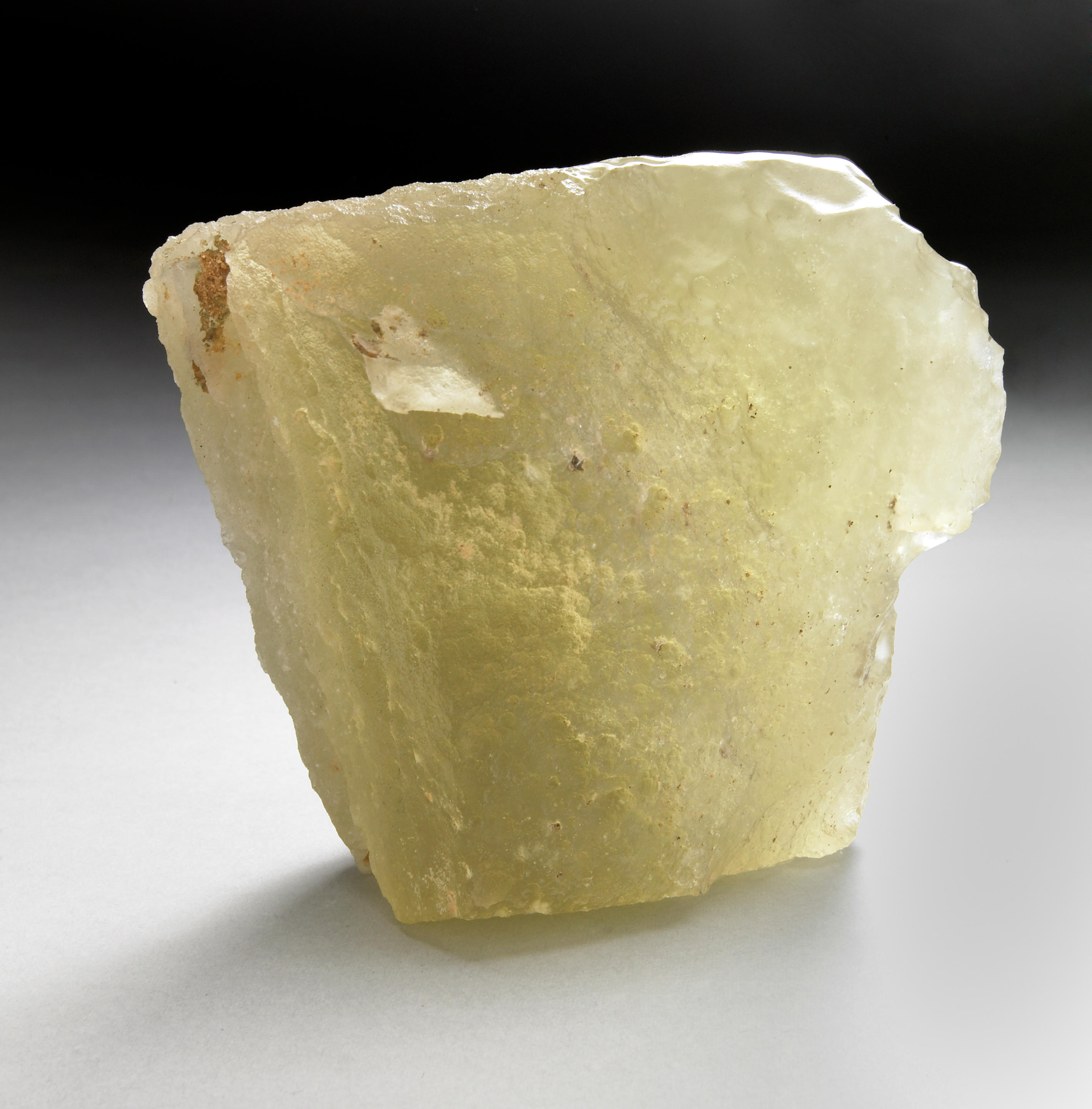Stony iron—PAL Kiowa County, Kansas In December 2005 it was reported throughout the world that a very large meteorite was discovered in Greensburg, Kansas. Scientists hailed this news as the most significant American meteorite discovery in decades; the Curator of Meteorites at the American Museum of Natural History stated that this meteorite, the largest oriented meteorite with naturally-occurring gemstones known to exist, was worth in excess of one million dollars. What inspired the search that resulted in this discovery is a history that extends back hundreds of years. Brenham meteorites have been found in Indian burial mounds as far away as Ohio—and while there were appear to be the first, Native Americans were not alone in being transfixed by these beautiful stones. In the late 19th century, a young homesteader named Eliza Kimberly began collecting what she believed to be meteorites. Her suspicions were confirmed in 1882 when scientists affirmed the meteoritic origin of several of the rocks Eliza found, and the area was dubbed “The Kansas Meteorite Farm.” In 1929, the "Father of Meteoritics," Dr. H. H. Nininger visited the farm and located numerous large specimens. One of the largest Brenham meteorites ultimately found its way to New York City’s American Museum of Natural History, and the complete slice offered here was removed from that same mass. Filled with hundreds of gleaming circular olivine crystals characteristic of Brenham meteorites, this is a superlative example. Meteorites with crystalline material such as that seen here are referred to as pallasites—which represent less than 1% of all known meteorites. (See lots Fukang and Imilac.) This is among the two or three largest complete slices of a meteorite ever available with an American Museum of Natural History provenance. 391 x 284 x 5mm (15.25 x 11 x 0.25 inches) and 2.275 kilograms (5.0 pounds).
Stony iron—PAL Kiowa County, Kansas In December 2005 it was reported throughout the world that a very large meteorite was discovered in Greensburg, Kansas. Scientists hailed this news as the most significant American meteorite discovery in decades; the Curator of Meteorites at the American Museum of Natural History stated that this meteorite, the largest oriented meteorite with naturally-occurring gemstones known to exist, was worth in excess of one million dollars. What inspired the search that resulted in this discovery is a history that extends back hundreds of years. Brenham meteorites have been found in Indian burial mounds as far away as Ohio—and while there were appear to be the first, Native Americans were not alone in being transfixed by these beautiful stones. In the late 19th century, a young homesteader named Eliza Kimberly began collecting what she believed to be meteorites. Her suspicions were confirmed in 1882 when scientists affirmed the meteoritic origin of several of the rocks Eliza found, and the area was dubbed “The Kansas Meteorite Farm.” In 1929, the "Father of Meteoritics," Dr. H. H. Nininger visited the farm and located numerous large specimens. One of the largest Brenham meteorites ultimately found its way to New York City’s American Museum of Natural History, and the complete slice offered here was removed from that same mass. Filled with hundreds of gleaming circular olivine crystals characteristic of Brenham meteorites, this is a superlative example. Meteorites with crystalline material such as that seen here are referred to as pallasites—which represent less than 1% of all known meteorites. (See lots Fukang and Imilac.) This is among the two or three largest complete slices of a meteorite ever available with an American Museum of Natural History provenance. 391 x 284 x 5mm (15.25 x 11 x 0.25 inches) and 2.275 kilograms (5.0 pounds).















Testen Sie LotSearch und seine Premium-Features 7 Tage - ohne Kosten!
Lassen Sie sich automatisch über neue Objekte in kommenden Auktionen benachrichtigen.
Suchauftrag anlegen